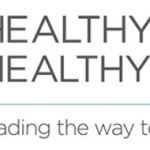What’s changed 1 year after RaDonda Vaught’s conviction?
 In the year since RaDonda Vaught was convicted for a fatal medical error, much has been said from leaders at all levels of healthcare about the need to build a strong culture of safety and empower front-line workers to report errors.
In the year since RaDonda Vaught was convicted for a fatal medical error, much has been said from leaders at all levels of healthcare about the need to build a strong culture of safety and empower front-line workers to report errors.
A jury found Ms. Vaught guilty of criminally negligent homicide and abuse of an impaired adult for a fatal medication error she made in 2017 while working as a nurse at Nashville, Tenn.-based Vanderbilt University Medical Center. Ms. Vaught immediately took responsibility for the error, which occurred after she overrode a medication cabinet, but contends that other factors and working conditions for nurses at the medical center contributed to the mistake.
“So many things had to line up incorrectly for this error to have happened, and my actions were not alone in that,” Ms. Vaught told ABC News last May after her criminal case ended and she was sentenced to three years of probation.
Ms. Vaught’s case spurred a national outcry from nurses who expressed their own fears about making similar mistakes amid staffing shortages and increasingly difficult working conditions. The American Nurses Association warned the conviction would discourage nurses from reporting medical errors, while the Institute for Healthcare Improvement said the case should serve as a wake-up call for health system leaders to improve harm prevention efforts.
“It is inevitable that mistakes happen, and systems fail,” ANA President Jennifer Mensik Kennedy, PhD, RN, told Becker’s this month. “Employers must recognize this, and then position their nursing leaders and staff nurses to lead discussions about the right organizational structures to proactively examine errors, develop system improvements and corrective plans.”
Many hospital executives echoed this message last spring, highlighting a need to build a strong culture of safety where team members feel safe to voice concerns or report errors.
“We, as leaders, must create environments rooted in psychological safety where employees feel able to do their best work free from fear,” John Couris, president and CEO of Tampa (Fla.) General Hospital, wrote in a column for Becker’s last April. “The bottom line is that organizations should be spaces where everyone feels safe to express themselves, be open and honest, point out challenges and opportunities for improvement, and not be singled out for trying their best in an imperfect system.”
Becker’s recently connected with leaders from Tampa General Hospital, Paterson, N.J.-based St. Joseph’s Health, Edison, N.J.-based Hackensack Meridian Health and Cleveland Clinic to understand how Ms. Vaught’s case has influenced their safety work and what progress has been made one year after her conviction.
What’s changed?
Ms. Vaught’s case — and the broader conversations surrounding it — spurred healthcare organizations across the industry to review their own safety programs and safety cultures to identify areas for improvement, Janine Begasse, BSN, RN, vice president of quality, patient safety and patient experience at St. Joseph’s Health, told Becker’s. However, it’s also shown how fragile that culture can be.
“It takes years to establish a culture of safety and trust in reporting errors, and sometimes it only takes one event such as Ms. Vaught’s case to destroy all the trust that you had built up,” she said. “Building trust back can be challenging, especially during these unprecedented times.”
The practice environment nurses are working in today is not the same one many nursing leaders worked in two or three decades ago. Nurses are seeing higher-acuity patients at higher volumes while simultaneously grappling with staffing shortages. Many new nurses are coming out of school with a mostly simulated learning experience.
“We are ripe for errors to happen, which is why the discipline of nursing and the organizations they work in have to put the meaningful structures and processes in place to keep them safe and to keep them from causing harm,” Kevin Browne, DNP, RN, senior vice president of patient care services and chief nurse executive at St. Joseph’s, told Becker’s.
Nurses’ use of automated medication dispensing cabinets — a key focus in Ms. Vaught’s case — is a concrete example of a process prone to errors. Court documents indicate that when trying to withdraw the sedative Versed, Ms. Vaught typed “VE” into the search function, not realizing the drug was listed under its generic name, midazolam. When the cabinet did not dispense Versed, Ms. Vaught triggered an override that unlocked access to a larger selection of drugs. After searching for “VE” again, she accidentally withdrew vecuronium, a powerful paralytic.
To prevent such errors, Hackensack Meridian Health adopted the Institute for Safe Medication Practices’ recommendation of increasing the number of characters required to withdraw a medication from one to five when searching via an override in all of its Omnicell cabinets.
Omnicell added the five-letter search function in 2020, though hospitals must opt in to the feature. Meanwhile, BD, another cabinet company, made five letters a standard on its machines last year.
“While overriding happens pretty regularly, this would make sure that they wouldn’t be able to get a dangerous medication without putting in five characters,” Theresa Harris, BSN, vice president of safety and high reliability at Hackensack Meridian Health, told Becker’s.
In terms of errors reported by staff, Hackensack and Cleveland Clinic said they have seen an increase over the last year. For one, COVID-19 numbers have declined, making it less of a burden for team members to complete event reports.
“It was tough to report during COVID. There were so many competing priorities,” Ms. Harris said.
Beyond that, Hackensack has taken several steps to encourage and make it easier for employees to report. The system recently updated its EHR to connect to its electronic event reporting system, which eliminated clinicians having to navigate between different systems to enter a report. It also instituted a systemwide “Good Catch Program,” which encourages staff to report precursor events — those that don’t cause moderate or significant harm to a patient. Every month, Hackensack leaders choose an employee to recognize for sending in their good catch.
“If we find and fix the problem while it didn’t cause that kind of harm, we can make sure it does never get to the point where it’s causing moderate to severe harm or death,” Ms. Harris said.
Cleveland Clinic has seen a “steady increase in the rate of reported events” over the past nine months, Leslie Jurecko, MD, the system’s chief safety, quality and experience officer, said in a statement sent to Becker’s. She tied the increase to the health system’s high-reliability strategy and Just Culture — a “fair” system of shared accountability between organizations and employees.
A strong safety culture is a daily effort
Given how fast-paced the healthcare environment is, there will always be new missteps or broken systems related to patient care that require leaders’ attention and response.
Many leaders recognize front-line clinicians are best suited to identify and brainstorm fixes to barriers that complicate their jobs, but it’s not enough to just expect them to do so. Relying on clinical teams to come forward with such challenges requires a strong organizational culture of safety, transparency and trust.
To truly create and maintain such a culture, quality and safety efforts must be ingrained into the DNA of every team member, from the C-suite all the way down to front-line staff members, according to Ms. Begasse of St. Joseph’s.
This is a daily effort that involves keeping communication lines open with team members when something is reported or an issue arises.
“We are making sure that we’re looking at those and bringing those also to the very top of the organization at our patient safety meeting, and talking with our chief hospital executive and those who can help us fix problems, and then we circle back and let the team members know we fixed it,” Ms. Harris said.
Enabling a robust safety culture all comes back to building trust between hospital leaders, front-line team members and patients, she added. It’s a two-way street: For hospital leaders to expect front-line clinicians to call attention to cumbersome workflows and patient safety issues, they must be transparent about their response efforts.
“If something is not right, we will do our best to fix it. It’s not enough to just know that something is wrong and [say] ‘oh yeah we have this many safety events’ — it’s [about] how many things did we fix,” Ms. Harris said.
Dr. Browne stepped into his chief nurse role at St. Joseph’s several months before Ms. Vaught’s trial gained national attention. He’s credited intentional rounding — not just rounding for the sake of rounding — for playing a key role in maintaining the system’s strong culture of safety over the past year.
“I know when a chief nurse rounds just for the sake of rounding versus a chief nurse who really wants to talk to the staff and understand what their practice environment is about,” he said.
Dr. Browne regularly rounds on day and night shifts and usually greets nurses, patient care assistants and unit assistants with a simple question: Is there something you need from me that’s going to help you today? The answers vary: We need more supplies. We need more staff. We need to hold admissions in the emergency department for a while. But they all share a common purpose — each interaction makes care team members feel supported and strengthens their relationship with Dr. Browne so that they feel comfortable bringing concerns to him.
Ultimately, health systems’ internal work to fortify safety cultures is just one piece of the puzzle. To truly create a physically and psychologically safe environment for healthcare workers, broader industry challenges must be addressed, including staffing shortages, workplace violence and burnout.
“The criminalization of medical errors is not the solution that will preserve safe patient care environments,” Dr. Mensik Kennedy of the ANA said. “Employers must address decadeslong workplace challenges that nurses are facing daily, such as insufficient approaches to nurse staffing that are causing many nurses to leave their positions.”
(This story originally appeared in Becker’s Hospital Review.)




